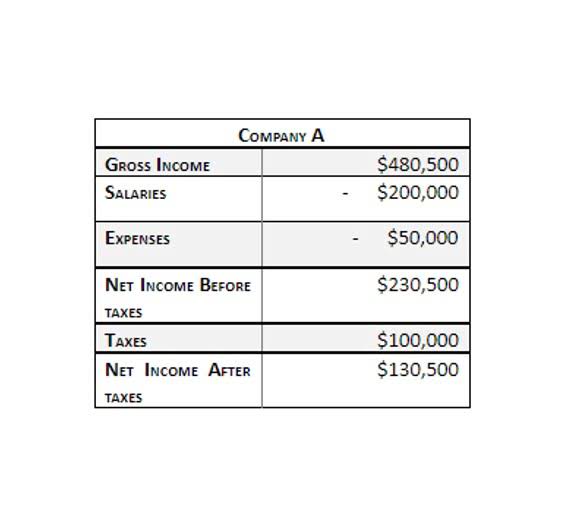
It is the spine of financial management, promoting accuracy, virtual accountant transparency, and compliance. The end users of accounting statements must be benefited from analysis and interpretation of data as some of them are the ‘stock holders’ and other one the ‘stakeholders’. Comparison of past and present statements and reports, use of ratio analysis and trend analysis are the different tools of analysis and interpretation.
- Summarisation helps in the preparation of Profit and Loss Accounts and Balance sheet for a particular fiscal year.
- While financial accountants often use one set of rules to report the financial position of a company, tax accountants often use a different set of rules.
- Even though the charges relate to services incurred in July, the cash method of financial accounting requires expenses to be recorded when they are paid, not when they occur.
- Management accounting, therefore, serves the information needs of the insiders, e.g., owners, managers and employees.
- They enable businesses to analyze their financial health, comply with regulations, and make informed decisions.
- From manual ledger books to sophisticated cloud-based systems, the fundamental purpose of accounts—recording and tracking financial transactions—remains unchanged.
Cost accounting
Without accounting, it would be incredibly difficult to gauge your business’s performance and whether it’s on track to meet its goals and obligations. Managerial accounting assesses financial performance and hopes to drive smarter decision-making through internal reports that analyze operations. Usually issued on a monthly, quarterly, or annual basis, the income statement lists the revenue, expenses, and net income of a company for a given period. Financial accounting guidance dictates how a company recognizes revenue, records expenses, and classifies types of expenses. An income statement, also known as a “profit and loss statement,” reports a company’s operating activity during a specific period of time.

Presentation of Financial Information
- With this software handling rote work, accountants can focus on their most important tasks.
- This focuses on the use and interpretation of financial information to make sound business decisions.
- Beyond basic accounting terms, this resource also explains alternative word uses and defines related or adjacent concepts.
- Accounting helps in the coordination of various activities in different departments by providing financial details of each department.
Asset accounts have a debit balance accounting meaning and are always presented on the balance sheet first. These are accounts related to a company’s expenses, losses, income or gains. Nominal accounts are considered to be temporary, they are reflected on a company’s income statement as net profit or loss, and are closed at the end of every fiscal year.

Tax Accounting
- Accounting is also considered a science because it is a body of knowledge.
- The entire purpose of accounting is to provide useful information to end-users.
- On the flip side, accountants use invoicing software to help you get paid.
- GAAP are the accounting principles that all regulated U.S. entities, including publicly traded companies, government agencies, and nonprofits, must follow.
- This rule is applicable to transactions involving people or businesses, for instance, a bank transaction.
The history of accounting has been around almost as long as money itself. Accounting history dates back to ancient civilizations in Mesopotamia, Egypt, and Babylon. For example, during the Roman Empire, the government had detailed records of its finances. However, modern accounting as a profession has only cash flow been around since the early 19th century. Accounting is the process of tracking the income and expenses of a business or other organization.

Accounting Principles: What They Are and How GAAP and IFRS Work
If he has properly maintained the accounts, he will not face the problems in explaining few things in court. The primary aim of accounting is to provide necessary information to the owners related to business. Under this system, in every transaction an account is debited and other account is credited. The crux of accountancy lies in finding out which of the two accounts are affected by a particular transaction and out of these two accounts which account is to be debited and which account is to be credited.
Accountants
When the company does the work in the following month, no journal entry is recorded, because the transaction will have been recorded in full the prior month. Another example of the accrual method of accounting is expenses that have not yet been paid. Imagine a company received an invoice for $5,000 for July utility usage. Nonprofit entities and government agencies use similar financial statements; however, their financial statements are more specific to their entity types and will vary from the statements listed above. Financial accounting guidance dictates when transactions are to be recorded, though there is often little to no flexibility in the amount of cash to be reported per transaction.

